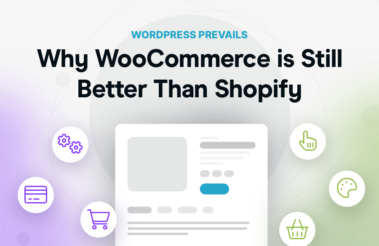
Why WooCommerce is Still Better Than Shopify
- •
- 4 min read
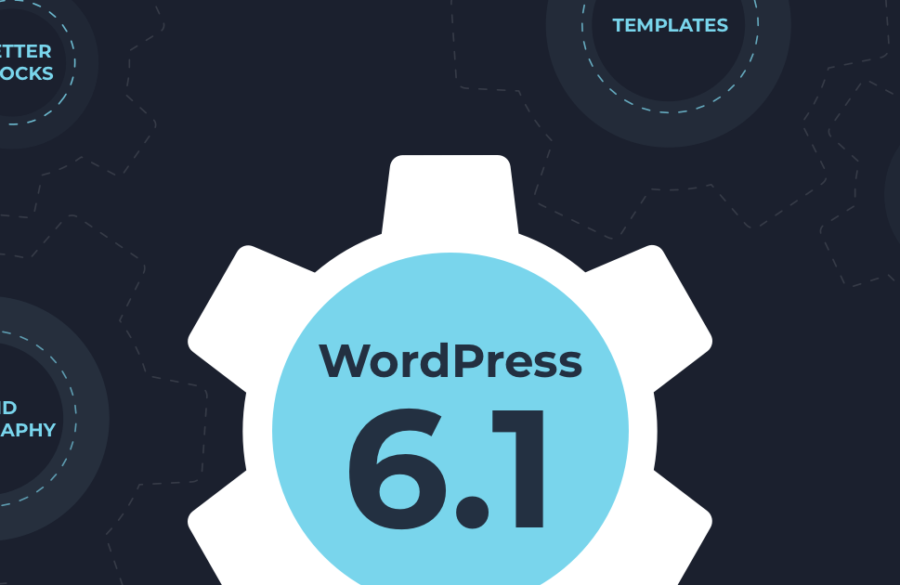
The most used CMS in the world is (almost) available in version WordPress 6.1. It’s the third major release of 2022. In addition to an improved writing interface for authors, there are also additional options for customizing your page design.
The new features for WordPress 6.1 bring a mixed bag of features for both developers and the average user. What’s still open is whether the handling is optimized so that the templates can keep up with established systems (Elementor, Divi, Beaver Builder) and compete in terms of popularity.
WordPress 6.1 drops on November 1, 2022 so don’t stay out too late on Halloween if you’re managing a portfolio of sites. The WordPress 6.1 Beta 2 is now already available for download and testing.
WordPress (and our) Reminder: Should I update to WordPress 6.1 right away?
WordPress 6.1 is still under development. Don’t install, run, or test this version on your production or any mission-critical websites. We recommended that you test WordPress 6.1 Beta 2 on a temporary url and check your website for any potential impacts.
You can already test WordPress 6.1 Beta 2 in one of three ways:
Option 1: Install, then activate the WordPress Beta Tester plugin. Once installed, you should select the “Bleeding edge” channel and “Beta/RC Only” stream from the plugin options found under “Tools/Beta Testing” in your Admin dashboard.
Option 2: Directly download the WordPress 6.1 Beta zip file.
Option 3: Use the following WP-CLI command: wp core update –version=6.1-beta2
“The goal of the new update is mainly to refine the features of WordPress updates 5.9 and WordPress 6.0 and fill gaps in functionality to connect the different workflows into a more coherent and fulfilling experience while waiting for phase three of the Gutenberg Roadmap.”
Mathias Ventura
After a quick look under the hood, we would sum up the new release in three points:
Template Editor: There is better clarity of global elements (templates, template parts, styles), which has the goal of unifying the Template Editor and the Contribute Editor.
Templates Patterns: Taking more advantage of the potential of templates, making templates a central element, including customization for user-defined post types, block types, and improving the locking feature and management of saved templates, etc.
Global Styles: 6.1 further optimizes the global styles interface while improving support for constraints and privileges. Web font management is enabled and block settings are enhanced.
The WordPress team did a product walkthrough you can check out right here. But, below are just a few of our favourites highlights in 6.1. You can check out the complete list of features here.
You’ve probably already taken 6.1 out for a spin though, right? What are your top features?
One of the most important new features is the improvement of site navigation with a new “browse mode” that allows editors to zoom in and out as they work.
The second focus is on templates, which will be increasingly used to improve the recognition and insertion process. There’s a lot more clarity between the various global elements (templates, template parts, styles) in WordPress 6.1. The goal here is to unify the template editor and the post editor. In particular, block patterns play an important role in template and page creation in 6.1.
There are a lot of them. Here’s a rundown of some of the new things in WordPress 6.1 that pulled us away from the last ball game!
WordPress 6.1 comes with a lot of new templates. The new templates are Page, Single item: Post, and Custom template. Previous versions made this possible only via the theme folder.
6.1 users and later can create custom templates without modifying the theme’s files. (image below)
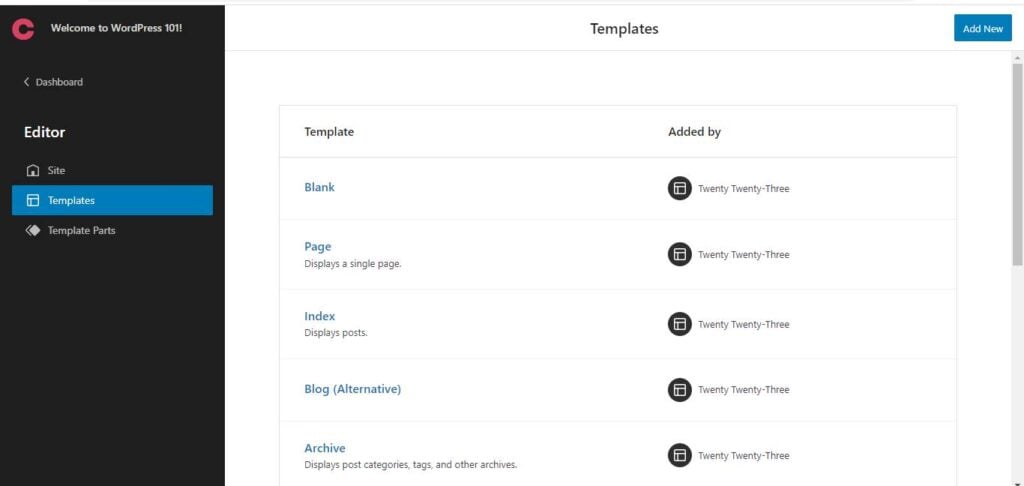
All the bundled themes now come equipped with header and footer patterns. This feature is related to the template parts and you can easily change to any other bundled patterns the themes are packaged with. There’s no longer a reason for ignoring your header and footer now – like updating the copyright year from 2001. There are a lot of design options available! (image below)
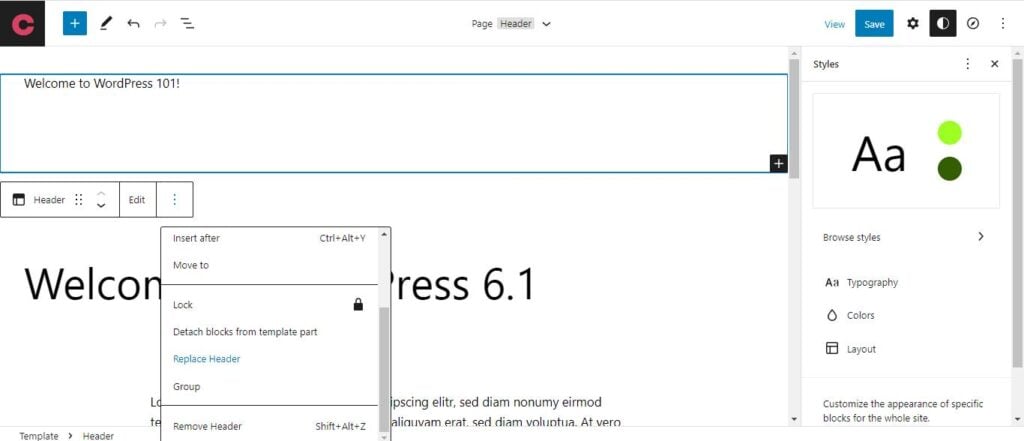
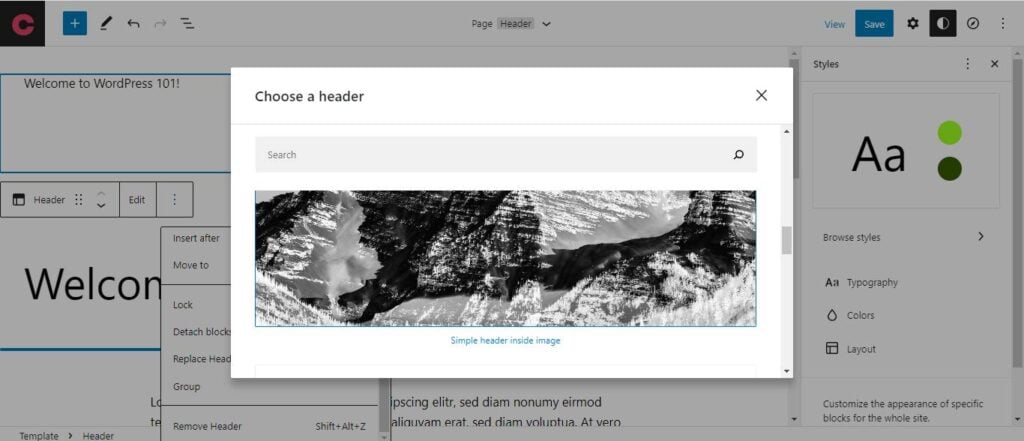
Another new feature of the Major Update 6.1 is the support for Fluid Typography via the calc/ clamp CSS functions. This is the ability to adjust the text to the width of the viewport by scaling between the minimum and maximum width.
Fluid Typography allows different themes to change sizes of the text depending on specific viewport sizes. (images below)
“Fluid typography is a fancy way of describing font properties, such as size or line height, that scale fluidly according to the size of the viewport. Contrast that idea with properties that respond to specific viewport sizes, such as those defined by media queries, but do nothing in between.”
WordPress
Some themes already support fluid typography, including, for some font sizes, the Twenty Twenty-Two theme.
You can check out the technical details of fluid typography on GitHub.
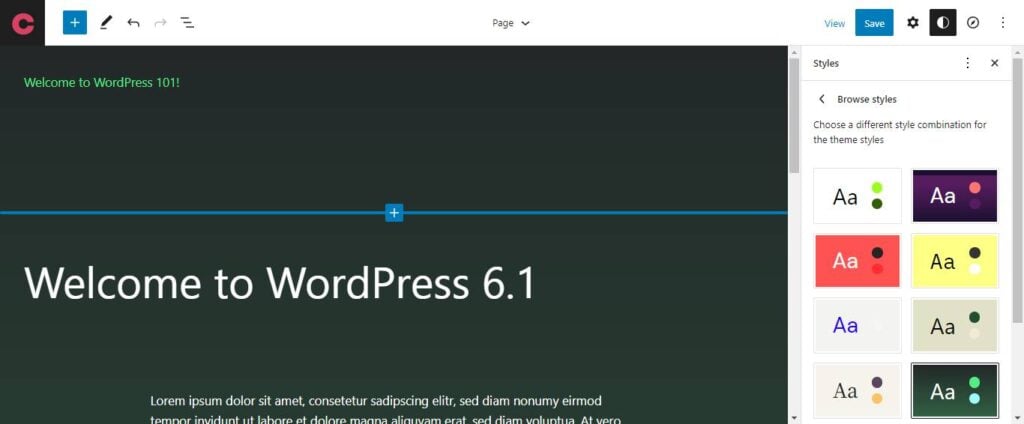
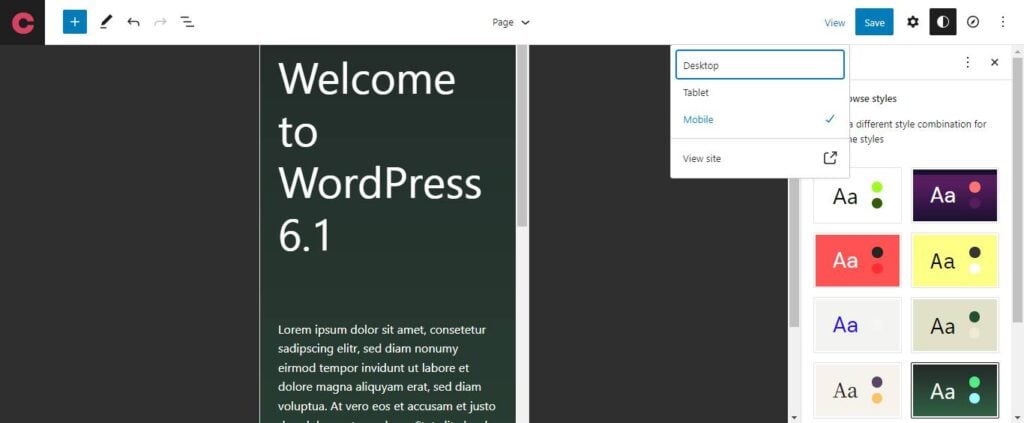
Finally! Spacing presets have been improved in WordPress 6.1. You can no longer define arbitrary values because the spacing tool works in terms of increments. Each theme can define the spacing presets it will be using. (image below)
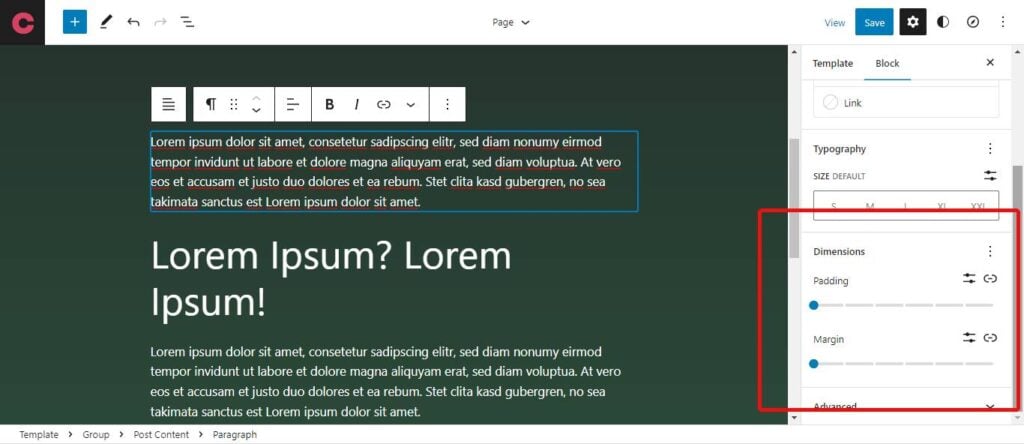
Column blocks can now define color and width with the border control element. You can also set different colors for each border.
Along with the column blocks, the image block also has new border controls. You can spend hours playing with this. Hopefully not to the detriment of your SEO! (images below)
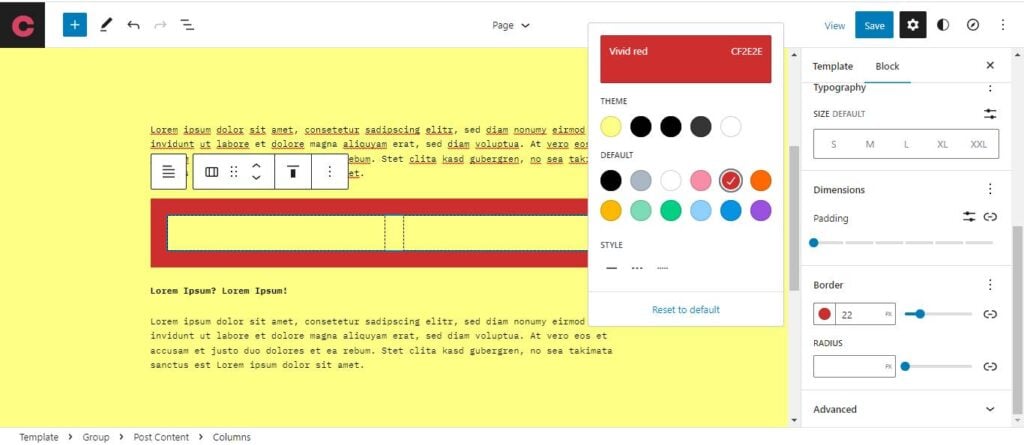
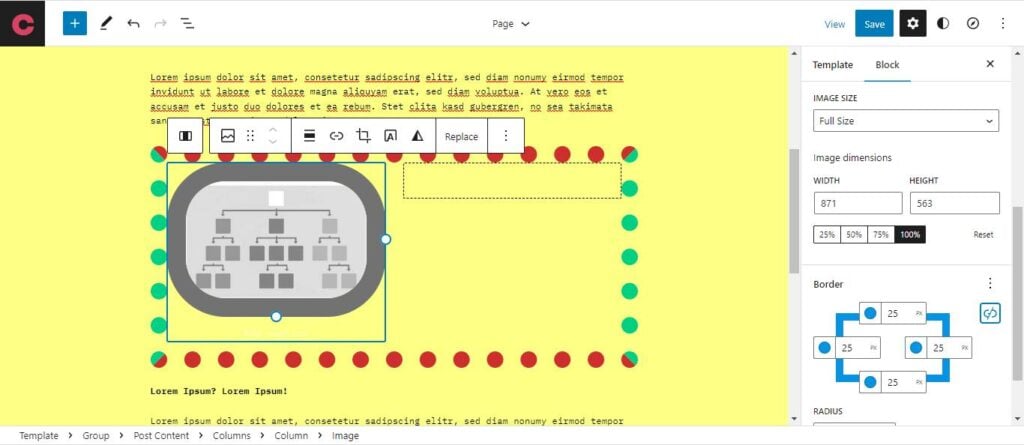
A new option has been enabled in Global styles under typography and it is the button element. You can now control all the styles of your buttons including font family, appearance, height, spacing, decoration, and letter case. (image below) Though, keeping action colors the same throughout your site is a better UX so use with caution.
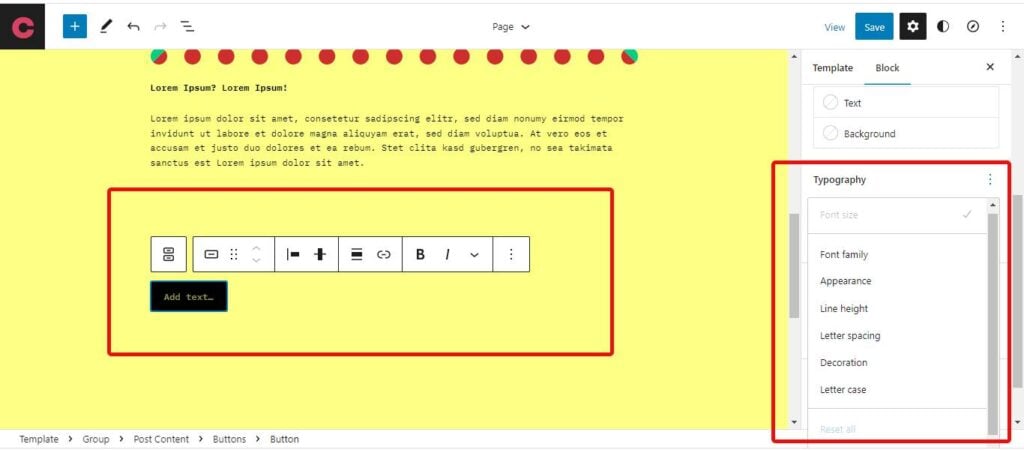
Much of what’s new in WordPress 6.1 relates to the Gutenberg editor. Check out everything that’s new in Gutenberg right here. Among the new features are:
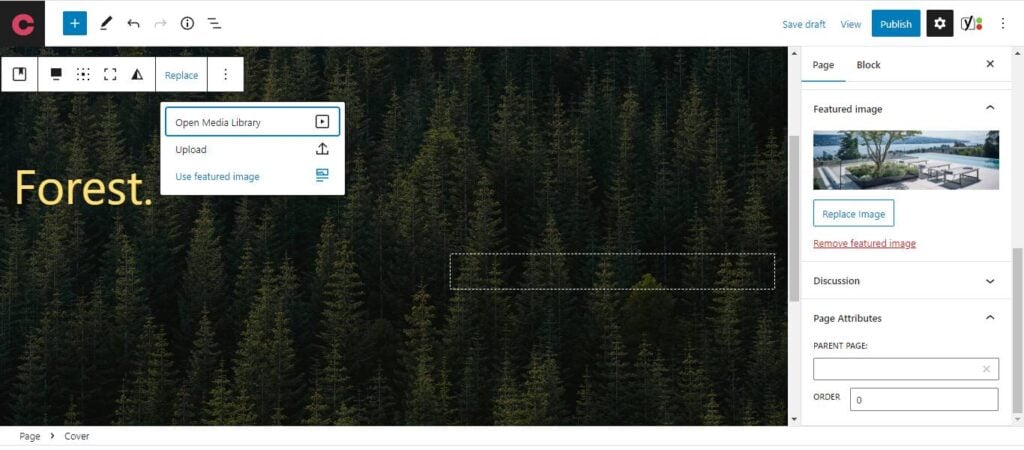
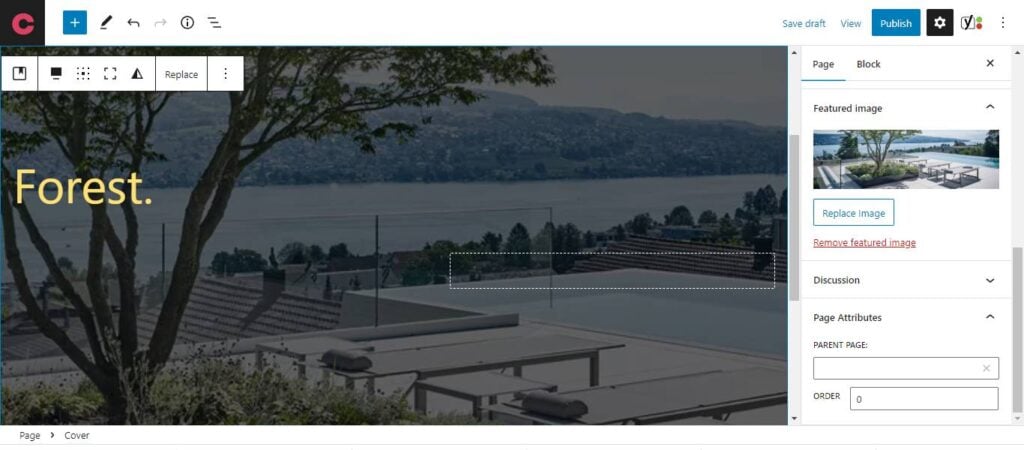
This is one of our absolute favorites! Google Docs has this halfway covered, but it’s really nice to see in WordPress now. It’s a major time saver and it will go a long way to help improve SEO too.
Gutenberg version 13.3 brings the Table of Content block into 6.1. The block recognizes any headline blocks, adds them, and provides anchor links – this is a major SEO bonus.
Now a table of contents with links can now be created quite automatically which is a great feature, especially for your blog posts.
(image below)
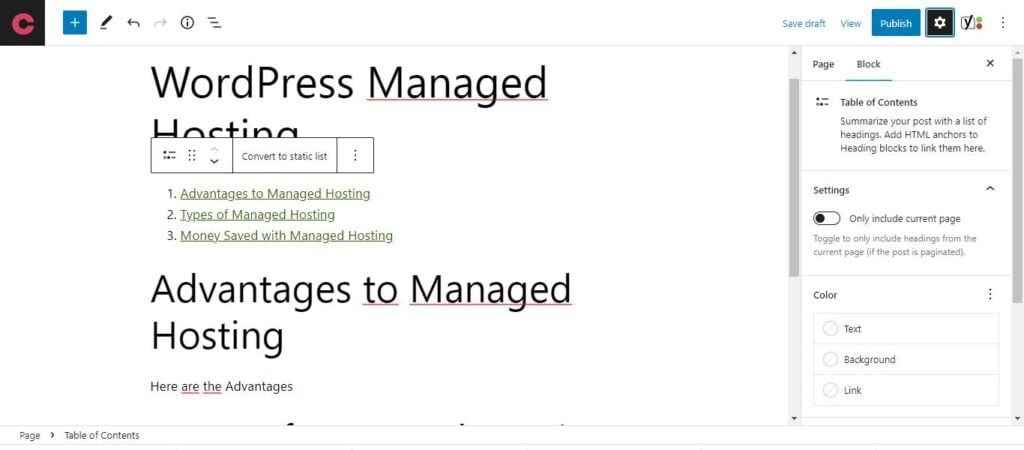
The WebP format (introduced in WordPress 5.8) is a modern image format, which offers better and lossless image compression. With WP 6.1, the automatic creation of alternative file formats was to be / will be supported.
If this will roll out on November 1 is still open as the automatic conversion from JPEG to WEBP has been temporarily disabled. The talk is that this feature will probably reappear as a plugin. Of note is that OpenGraph does not support WebP or SVG images – so be careful with the file formats for your default site image and featured images for pages and posts.
WebP is the image format for the Internet that Google introduced in 2010. The advantage of WebP over JPEG and PNG is the smaller file size, so faster loading times of web pages unless you have full-page caching and lighting fast web hosting. (We know a guy).
In practice, this means that when a JPEG image is uploaded, WordPress can automatically create both a WebP and sub-sizes of the JPEG format, which can eventually be used in the front end. Developers can still override the default settings to determine which image format to use.
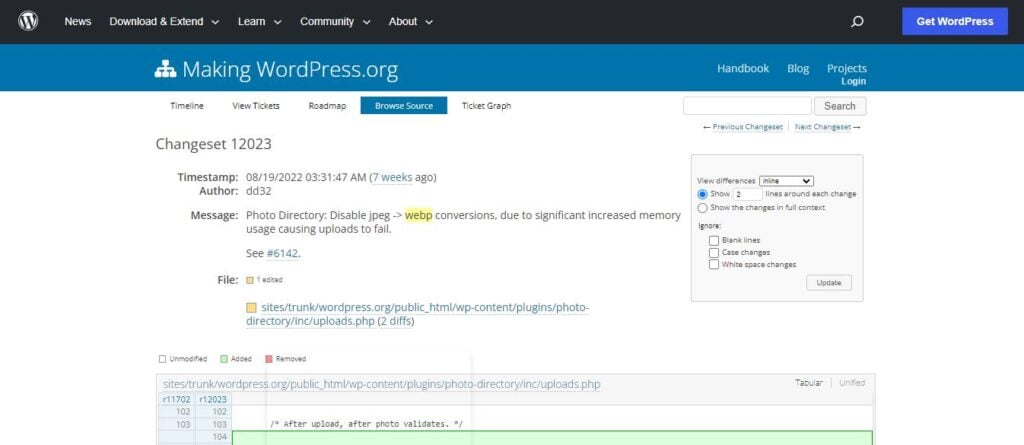
The new standard theme got most of our attention. As Matias says, it’s one of the most exciting aspects of 6.1. We’re still undecided if this is going to be more of a selling point for end-users or for developers.
Any of you already used to the free website provided by Google Business Profile has experience with the one-click theme design offered for your business listing. This is a free resource and many small businesses have taken advantage of this not only for the local SEO advantage.
Anyone not able to create a website, can still be findable, making the web a little more democratic.
WordPress 6.0 offered four standard styles you could switch between (image below).
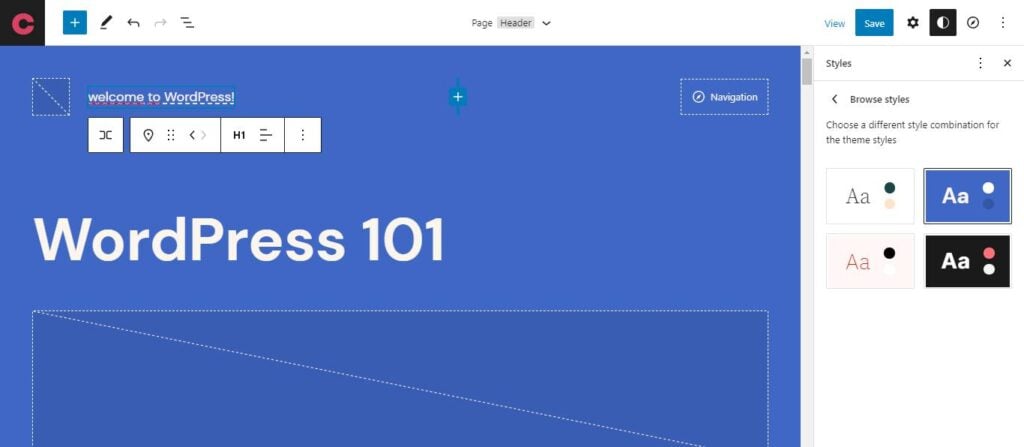
Comparing the 6.1 standard theme’s one-click design (first image below) with that of Google’s (second image below), we were at once intrigued, and excited, and then we went for a walk around the block to grab a coffee. In addition to choosing a global style, you can also control typography, colors, and layout.
The potential of the extra theme styles will probably have lovers and haters alike.
WordPress now offers 11 different standard theme designs that offer on-click switches between color, font, and style. Google offers 10 unique styles.
“So I’ll jump straight into the one that’s most exciting, probably, which is a new default theme: Twenty Twenty Three. The beauty of it is going to be in the (ten) style variations that it packages. (It’s) the first time that we did this sort of call to the community to submit styles for a default theme.”
Matías Ventura – WordPress

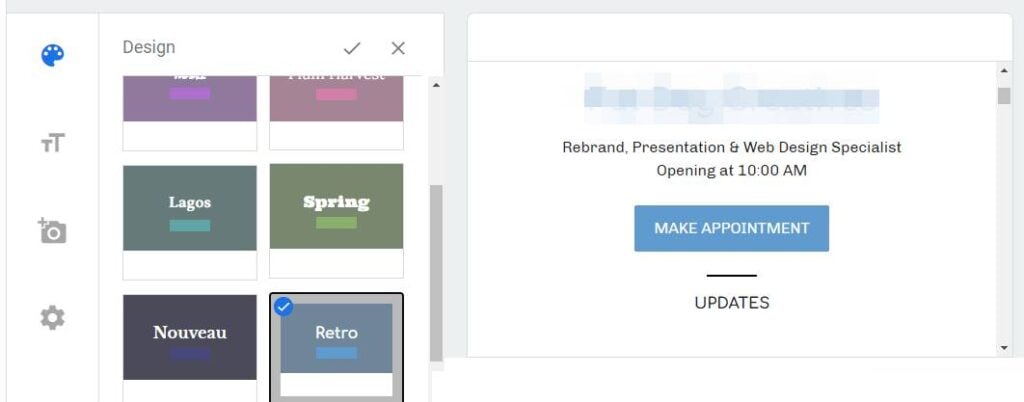
Unhappy with your current WordPress website? Let’s talk about how we can upgrade you to WordPress 6.1, and migrate your site to Rocket.net, the fastest WordPress hosting available anywhere.
Our team of experts is standing by. Most website owners have switched hosting providers multiple times over the history of their site. We’re confident that you won’t look back once you make the switch to Rocket.net.
The best customer support 24/7, super fast speed, ease of use, and access to top tools and industry-leading resources should always come standard. We’re revolutionizing the way your WordPress site gets served up to the world, and we look forward to partnering with you in growing your business.